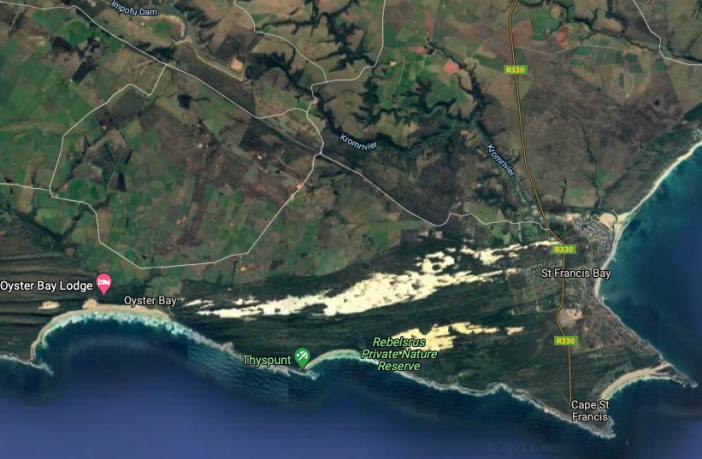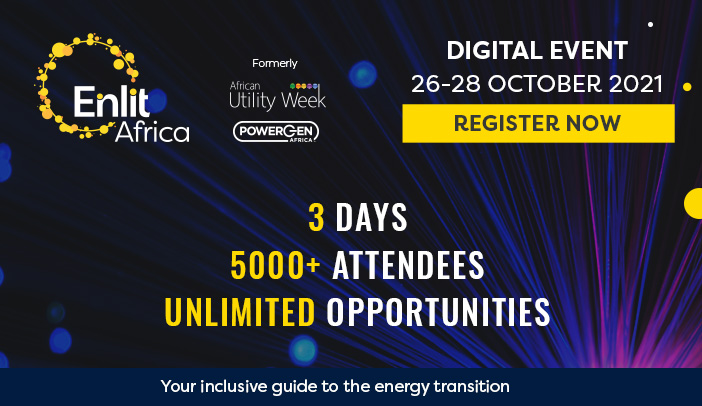Opinion
Nuclear power is our only long-term hope for safe, clean, reliable, sustainable, affordable grid electricity, without which our chances of becoming a modern industrialised nation with good economic growth and low unemployment are nil writes Andrew Kenny.
The best news in years for South Africa’s precarious electricity supply is the announcement by the Department of Mineral Resources and Energy (DMRE) that it plans to go out on tender for 2,500 megawatts (MW) of new nuclear power at the end of this fiscal year.
Eskom, once one of the best electricity utilities in the world, is in tatters. It has been ruined by corruption, incompetence and ideology. By 1994, it was clear that more power stations had to be built if we were not to run out of electricity. None were, and we ran out of electricity in 2007, crippling our economy. Eskom finally did build more power stations, but in a panic, and chose two awful designs for the gigantic Medupi and Kusile coal stations, with bad contracting, bad workmanship and plagued with corruption.
Then the greens [pro-renewable], who are rich and powerful, forced Eskom to buy their dreadful electricity under the Renewable Energy Independent Power Producers Procurement Plan (REIPPPP). This proved to be the most expensive electricity in South African history and the worst. I have got the production graphs for all REIPPPP electricity since it started up in 2013. They are truly appalling.
Related news: Eskom applies for second nuclear site at Thyspunt near Cape St Francis
The announcement about the 2,500MW of nuclear was met with a sigh of relief by those who care about the South African environment and the South African people. But it was met with horror by the rich, powerful establishment that has a huge financial and ideological vested interest in solar and wind. Rich “renewable” power companies from Germany and elsewhere hope to make fat profits out of the people of South Africa, which they would lose if we went nuclear.
A WIND TURBINE REQUIRES TEN TIMES AS MUCH CONCRETE AND STEEL PER KWH AS NUCLEAR
The greens hate nuclear, which works in harmony with nature with the least disruption. Instead, the greens want to conquer and dominate nature with tens of thousands of gigantic wind turbines and colossal solar arrays, using vast amounts of materials. A wind turbine requires ten times as much concrete and steel per kilowatt-hour (kWh) as nuclear. The huge solar stations in the Northern Cape are situated hundreds of kilometres away from customers, while Koeberg delivers electricity to Cape Town, thirty kilometres away. The greens dislike localisation.
The safety record of nuclear power is the best of any energy technology. This is over the full energy cycle, including mining, construction, operation and waste disposal. It has the least waste problem because its wastes are so tiny and so easy to dispose of safely. The toxic wastes from solar and wind, which last for thousands of millions of years, are not a great problem but are a bigger problem than those of nuclear. Over the full energy cycle, nuclear is always economical and in many countries, such as France and Germany, is the cheapest source of electricity. In South Africa, Koeberg Nuclear Power Station, which started up in 1984, has proved the best and cheapest station in our history.
ALL OVER THE WORLD THE FINAL PRICES OF SOLAR AND WIND ELECTRICITY KEEP GOING UP
It is important to distinguish between reliable and unreliable electricity. Coal, gas and nuclear provide reliable electricity. Solar and wind, with one exception, are unreliable and only work occasionally. The cost of converting unreliable into reliable electricity is enormous. This explains an apparent paradox. The greens keep telling you that the costs of solar and wind are coming down but all over the world the final prices of solar and wind electricity keep going up. In Germany, Australia, Denmark, the UK and the US, it is always the same story: the more solar and wind on the grid, the more final electricity prices soar, and the more electricity failures you have.
South Africa is condemned by her awful Integrated Resources Plan 2018 (IRP2018). This is a legal document for planning new electricity sources until 2030. It uses fantasy computer models, some drawn up by the CSIR, which bear no relation to the real word. IRP2018 seems to have been captured by the rich renewable energy companies and the greens. It ignores the fact that solar and wind have proved ruinously expensive all around the world and pretends that they are actually cheap. It hates nuclear and declares there must be no more nuclear build before 2030.
Related news: Nuclear reactor trips at Koeberg Power Station in South Africa
The timing of new nuclear build, if it goes ahead, would go something like this. We should go out with Requests For Proposals at the end of 2021. They should come in by the end of 2022. By the end of 2023, the government will make its choice. Contracting would begin in early 2024. The first unit should come online by 2032, compliant with IRP2018.
The new build would either be at Koeberg, which has full nuclear facilities, or at Thyspunt in the Eastern Cape [see featured image], which has received environmental permission. If Thyspunt is chosen, approval could be sought immediately from the Kouga Municipality for preparations off-site: widening roads, building housing and so on. Once contracting began, earthworks and civil preparation could be started with local labour and local contractors, bringing useful jobs to a region of high unemployment.
The one exception I mentioned for reliable electricity – often called dispatchable electricity – is Concentrated Solar Power (CSP) with storage. Here the heat of the Sun is collected by mirrors in a working fluid, which is then pumped into storage vessels. The hot fluid is used to make steam to drive a steam turbine to make electricity. The Northern Cape has about the best solar conditions in the world. CSP power stations there have won awards for engineering excellence. In short, this is the very best that can be expected of solar. The price of electricity from the very latest CSP at peak time? Over 500 cents/kWh. The cost of electricity from Koeberg at the same peak time? 40 cents/kWh. The cost of electricity from a new nuclear station? By my calculations, using real-world costs, explaining the financing, about 80 cents/kWh.
We have messed up our electricity present. Please let us not mess up our electricity future. Please let us go nuclear.
Author: Andrew Kenny
Andrew is an engineer, environmentalist and an independent energy commentator
NOTES:
1. Eskom’s last report shows that the price it has to pay for REIPPPP electricity is 215 cents/kWh. This compares with its own selling price of about 90 cents/kWh. The author emphasises that the 215 cents/kWh is for unreliable electricity. To make it reliable you’d have to add at least another 200 cents/kWh.
2. The REIPPPP production data is available on request to the author.
3. Concrete and steel for wind and nuclear: Metal And Concrete Inputs For Several Nuclear Power Plants. Per F. Peterson, Haihua Zhao, and Robert Petroski. The University of California, Berkeley, 4153 Etcheverry Berkeley, California 94720-1730. peterson@nuc.berkeley.edu. Report UCBTH-05-001. February 4, 2005
4. Wind and solar chemical wastes include toxic heavy metals like cadmium, arsenic, chromium and lead, which remain dangerous forever. Their radioactive wastes are not much of a problem since they last for such a long time, and therefore are feebly radioactive. Thorium is an example. Vaalputs could easily and safely store all of SA’s future nuclear wastes
This article was originally published on ESI Africa and is republished with permission with minor editorial changes.
Disclaimer: The articles expressed in this publication are those of the authors. They do not purport to reflect the opinions or views of Green Building Africa, our staff or our advertisers. The designations employed in this publication and the presentation of material therein do not imply the expression of any opinion whatsoever on the part Green Building Africa concerning the legal status of any country, area or territory or of its authorities.


















1 Comment
Hmmm, what a load of low intellect tripe.
I would guess the author is selling nuclear power – Can you guess the number of deaths caused globally by Wind power? solar Power? Zero
Death dues to coal millions per year
death by Nuclear reactor malfunction ??? they do not like to tell us
Or the massive cost incurred for storing all that highly toxic waste?
The true cost of locking the country into a nuclear- energy build is now becoming clear. And moving and storing nuclear waste is incredibly expensive. Germany has become a test case for the rest of the world, after Chancellor Angela Merkel decided in 2011 to phase out the country’s 17 nuclear power reactors. That decision came after the Fukushima nuclear disaster in Japan earlier that year.
Nine of Germany’s reactors have already been shut down, while the rest are meant to be turned off by 2022. But their nuclear waste will remain dangerous for tens of thousands of years – up to a million years. This also means someone has to pay to store that waste, and keep it safe, for that length of time.